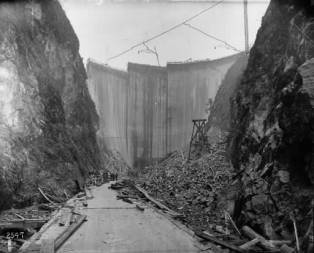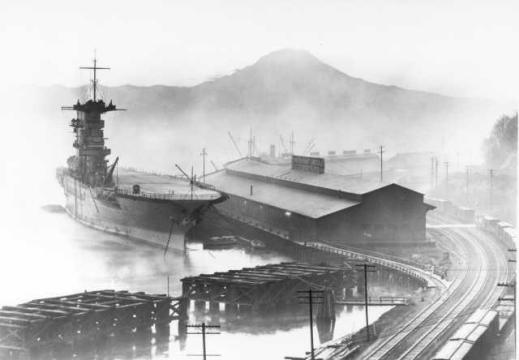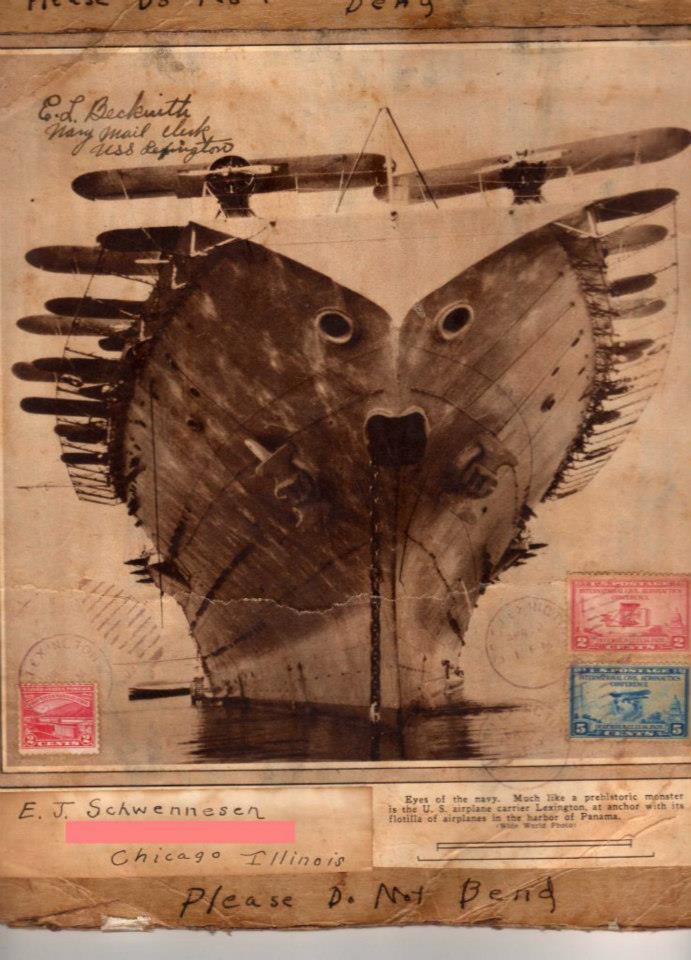Something was wrong with October.
In 1929 Tacoma, the rain was missing and the weather that did arrive out of the north and west was clear early cold. The leaves on the deciduous trees were falling off green with frost and the juncos and winter wrens were already searching the branches of the conifers. Ordinarily the city might consider the dry autumn a blessing but instead it brought a disturbing reality to what was otherwise a source of immense civic pride. Now, with winter coming on, the puzzling weather was starting to rattle the confidence of a city that had given itself over to the ultra modern miracle of unlimited electricity.
Tacoma was one of the first cities in America to build its own hydroelectric generation system by constructing the ambitious LaGrande Dam on the Nisqually River in 1912. Then in 1926 Tacoma City Light switched on the Cushman Dam on the Skokomish River in Mason County and brought a seemingly inexhaustible supply of power more than 40 miles into the city. The marvel of the Cushman project was not the 1100 foot long dam or massive dynamos and generators; it was the engineering feat of spanning transmission lines a mile and a quarter between two towers across the Tacoma Narrows. At the time it was the longest free hanging belly span in existence and it was entirely over corrosive salt water.
The fact that electricity was not only cheap but technically owned by the citizens of Tacoma made it almost patriotic to stock up on kitchen appliances, radios, plug-in gadgets and gizmos. In the months after the Cushman electricity started arriving down the transmission lines on 21st street more than 5400 ovens were sold in Tacoma. The blocks of Tudor style homes around the Cushman transformer station at 21st and Washington were all electric, including furnaces. Blazing street lights just for automobiles began appearing and downtown giant electric signs became commonplace.
Then came the rainless fall of 1929. Between September first and Halloween, a period when average rainfall was typically 7 inches, an upturned bottle cap would not have filled up with rainwater. By December rainfall had still not reached an inch, Black Tuesday and the onset of the Great Depression had happened and worst of all, Ira Davidson, Commissioner of Public Utilities had really bad news. The water levels behind Tacoma’s

dams were all at frightening lows and falling, rivers and creeks feeding the reservoirs were freezing up and there was a very real danger of ice being sucked into the turbines, destroying the dams. The city’s electricity was being slashed immediately, streetlights were turned off, downtown shops and signs were darkened at dusk, industrial users were limited to daylight operation and the barracks lights at Camp Lewis shut off at 4 p.m. When Rhodes Department store unveiled their celebrated corner window Christmas display the elaborate tree lights and electric trains ran only a few hours each day. Tacoma was connected to a giant dimmer switch and it was rapidly closing just in time for Christmas.
***
In classical Greek theatre and ancient storytelling there is a plot device called the Deus ex machina. It is a completely unexplainable, highly improbable grand solution to an unsolvable question or circumstance. If the story creates a situation for a character that is inescapable or if the playwright has written themself into a corner, the Deu ex machina, usually in the form of a blazing chariot or hovering cloud appears to save the day. Theatrically the ancient trick became a convention used by Sophocles, Shakespeare, Tolkien and Hitchcock. Some even connect it with the origins of Santa Claus.
a plot device called the Deus ex machina. It is a completely unexplainable, highly improbable grand solution to an unsolvable question or circumstance. If the story creates a situation for a character that is inescapable or if the playwright has written themself into a corner, the Deu ex machina, usually in the form of a blazing chariot or hovering cloud appears to save the day. Theatrically the ancient trick became a convention used by Sophocles, Shakespeare, Tolkien and Hitchcock. Some even connect it with the origins of Santa Claus.
***
By the middle of December desperation was setting in as the longest nights of the year approached. Then, in the morning hours of December 16th something truly remarkable happened in Tacoma. In nearly complete silence a constellation of lights began emerging from the ice fog that covered Commencement Bay. What appeared next was one of the largest electrically powered movable objects in the world- the U.S.S. Lexington- a flattop aircraft carrier three times the length of the field at Stadium Bowl.
In what seemed a flight of pure imagination, the gigantic vessel was maneuvered up to Baker Dock by a fleet of tugboats. Its steam powered turbo generators were connected by heavy cables to transformers moved to the waterfront on flatbed railroad cars which were in turn wired into the city’s electrical network. Within 24 hours the 180,000 horsepower electrical engines of the fourth largest ship afloat were surging thousands of kilowatts of electricity into the city’s power grid.
A week before Christmas, the lights of the city came back on. Dimmed streetlights, downtown neon displays and festive hotel decorations all brightened.
The old Tacoma Hotel, passed over by ritzy travelers headed to the brand new Winthrop Hotel, suddenly filled with the families of the thousand sailors on the Lexington. They mixed with old Tacoma families who remembered weddings and proms in the grand ballroom and the big fireplaces in the Tudor lobby and Mermaid dining room. Along Broadway the marquees and theatre lights came up full.
A payday for the officers and crew of the big ship poured more cash into businesses downtown than City Light paid the navy to fuel the generators on the Lexington. By Christmas Eve it was raining steady and the reservoirs were filling fast.
***
The Lexington slipped out of Tacoma on January 16th, after providing power to the city for 30 days. She would serve as an emergency hospital in Nicaragua following a disastrous earthquake in 1931, then assist in efforts to rescue Amelia Earhart in 1937 before being lost in the Pacific during the Second World War. Named the Grey Ghost by Tokyo Rose, the vessel existed for only 15 years.
In the deepening Depression, the Tacoma Hotel would be lost in one of the city’s most tragic conflagrations. It would exist for only five more years.
The Cushman transmission lines over the Narrows would embolden bridge builders to construct a suspension bridge over the same waters. It would exist for five months.
The political persuasion and pure coincidence that made up the backstory of how a warship was used to power a city would fade into obscurity.
But that was all in the future during the winter of 1929 when the Deu ex machina saved the City of Tacoma’s Christmas.

I was vaguely familiar with the fact that the Lexington had once supplied power to Tacoma in a pinch. Thanks so much for adding context, color and making that moment in Tacoma history truly come to life (or should I say–light)?
LikeLike
Is North Lexington Street at 5 Views near Point Defiance named after the Lexington aircraft carrier because of its importance at the time, or after another Lexington?
LikeLike
Would be interesting to learn the machinations to get it here. Also, the finances behind the dam, a huge expense.
LikeLike
A Paul Allen funded search vessel recently found the Lexington’s final resting place in the Pacific.
LikeLike